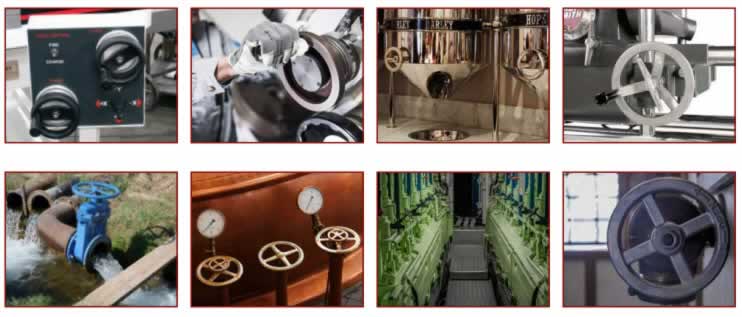Handwheel Functions
Handwheels typically perform one of two operational tasks. They enable movement and precise adjustment to machinery or carefully open and close a valve. Because they perform various functions in many different applications, handwheels come in a wide variety of types and sizes.
Some handwheels are gently moved by fingers making fine adjustments to everything from medical to measuring devices. Other handwheels are used to turn valves controlling the flow of oil and gas. These handwheels are quite large and require the ability to transmit a lot of force to the wheel to turn it.

Small wheels are utilized for adjustment and require no more than finger force. These are typically made of durable plastic or lightweight metal like aluminum. Larger wheels are typically made of cast iron. Overkill is the name of the game in handwheels. The smallest wheel is far stronger than required and the largest wheels are made to the same intention.
When more force is required to over come adjustment resistance in any type of handwheel, a crank handle can be added to enable more force to be exerted.
What is the purpose or application the handwheel will be used for?
This will typically determine the area in which it will be attached and how much space is available to attach the handwheel. The diameter of the handwheel determines the amount of turning force. Diameter also affects how fine an adjustment can be made when applied to machining. To aid in turning, many handwheels have an added handle to gently ease the ergonomics of turning the wheel rapidly.
Are you looking for Handwheels?
Submit an RFQ now!
